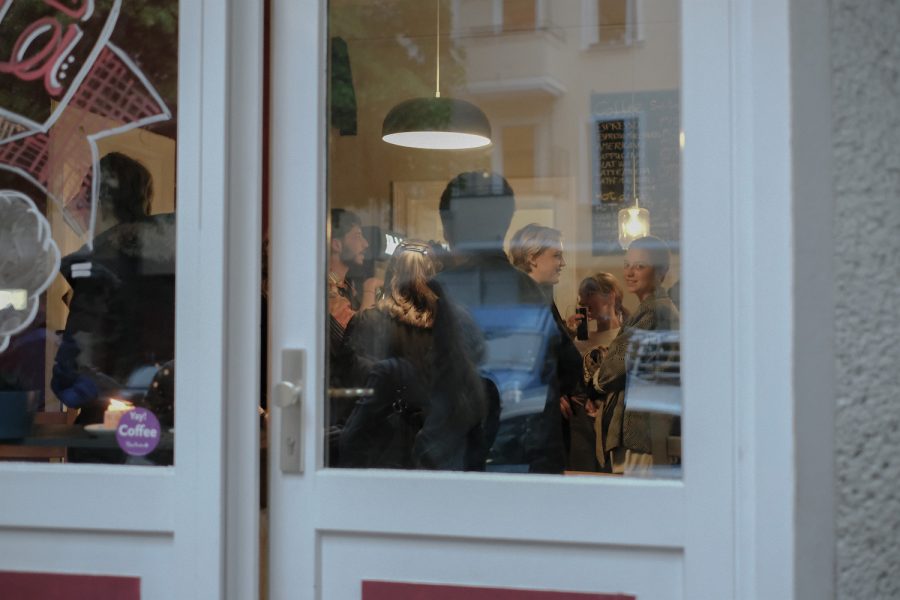We meet early on a Saturday. I roll in on my bike with breakfast for Danny (BA 2021), my fellow organising partner for Pankumenta 2019. He looks sleepy but greets me with a warm smile, and I know we are both exhausted but excited. We unroll some canvases, tape them onto the Ikea painting frames belonging to the café, and hang them up. Other people from the Pankumenta team begin to arrive, some of them with sculptures, others with photographs, lights. We take down the original decoration of the Two Yellow Chairs Café, replace it with art from young, promising art-makers, and we hope we are set to go — slightly stressed inside, but mostly excited.
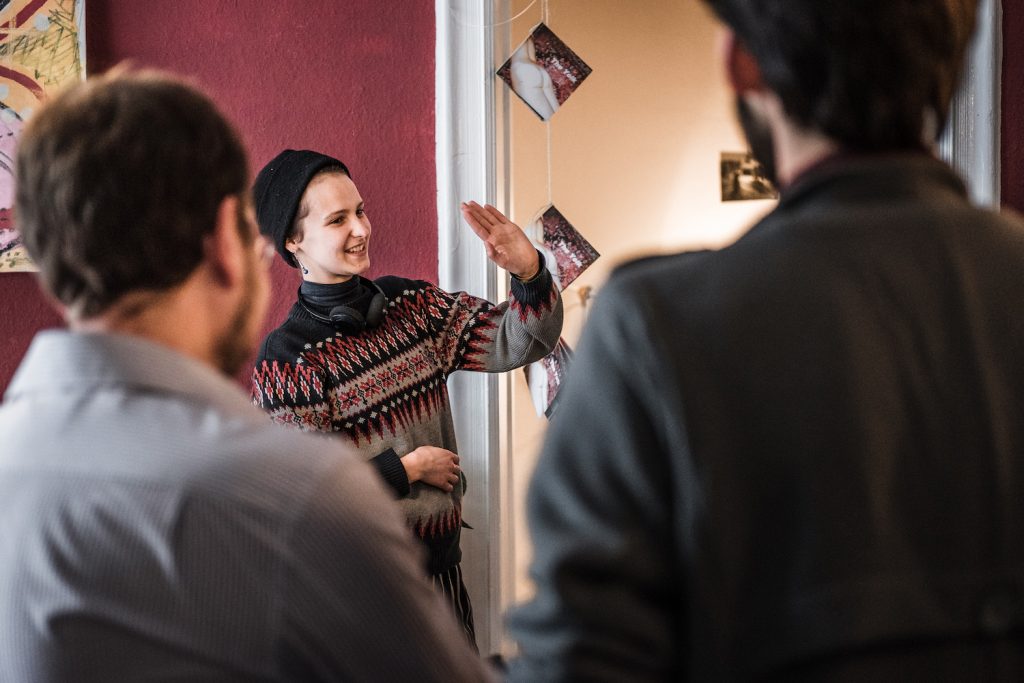
Starting as an idea to bring more connection between the different studio art concentrations at Bard College Berlin while offering an opportunity for new artists to exhibit in the format of a real arts festival for the first time, last year’s Pankumenta took the form of a barbecue with music, performances, and an incredibly well-curated contemporary art exhibition in the Factory. This year, Pankumenta was held off campus in Neukölln on its first day because of scheduling conflicts with the Factory, but we decided to keep the name because Pankow is where it originated and where it was still held on the second day. The festival was organized again by Bard College Berlin students — people who spend their everyday life in Pankow. We tried to bring the spirit of what this green neighborhood feels like for us to another part of the city, where many of our students do also reside.
With over twenty artworks submitted via our annual Facebook open call for starting artists, Pankumenta 2019 went full out with performances, exhibitions, workshops, presentations, discussions, and honestly I am still not 100% sure how it all came together or what made it so magical. Was it the café space, situated in lively Neukölln, that warmly opened its doors to host this festival? Or was it all the people willing to give their time to present, teach, discuss and share their art and skills? Or was it the students of Bard College Berlin who took the initiative to pull different forms of art together, to contact their friends and strangers and ask them to come and play, show, exhibit, present in exchange for smiles and gratitude? Well, I don’t know for certain, but I suspect it was a combination of all these factors that made Pankumenta 2019 feel so real, warm and alive.
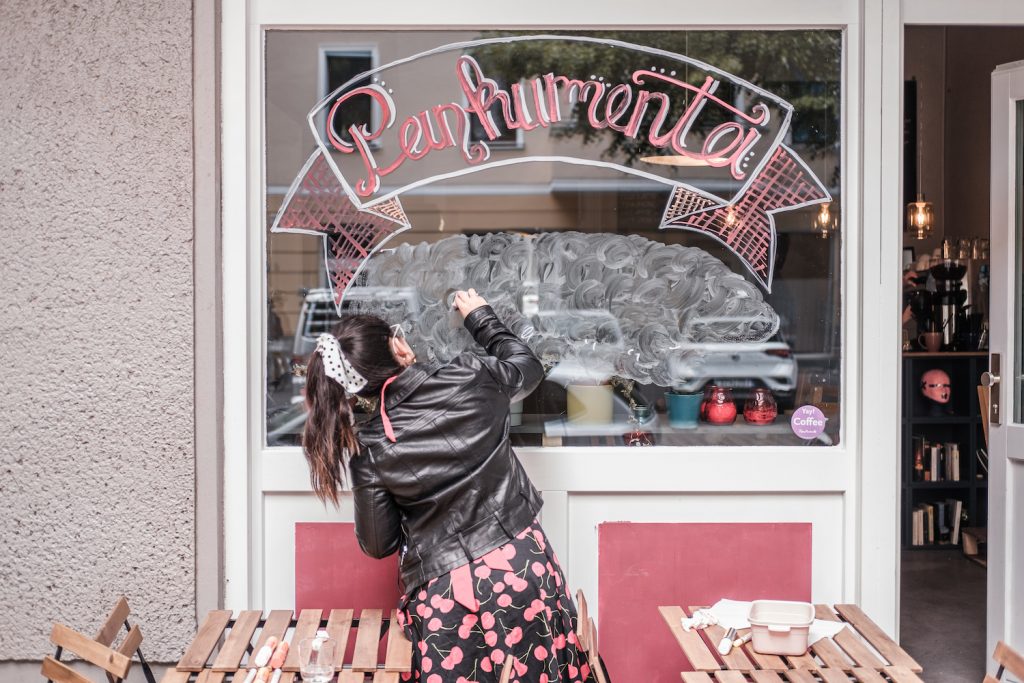
On the morning of May 11th, we opened for the public with an art tour with our dear art history faculty Geoff Lehman, who led an analytical discussion about the exhibited art. With about ten people attending this talk about contemporary art that creators from all around the world submitted for this year’s Pankumenta, the discussion became rich with impressions and insights. Although the attendance was not dense for the first event, it was amazing to see how enriching people found the exchange of impressions and knowledge about the exhibited art. After some technical difficulties, we moved on to short film screenings by three young filmmakers and video artists; the space was starting to fill with people from Bard College Berlin, their friends, as well as random comers.
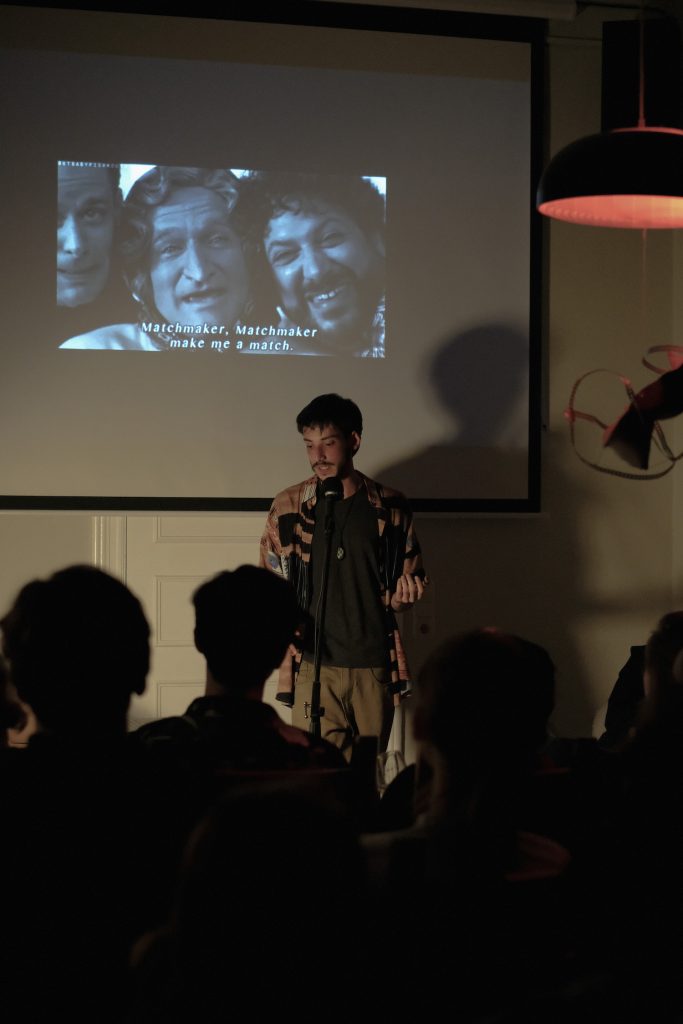
A session called Literature on its Fringes followed, with many people presenting their texts or works of literature, which in their form and content as well as in the discussions that ensued challenged the notions of literary styles and what we perceive as literature. The time was too short to pose all questions that had crossed our minds while hearing some of the writings. The event had to go on. And it did. A show of colorful moving lights by Bose Sarmiento (BA 2021) brought a sense of community and relaxation while the dance from Collectif Britz Bereit amazed everyone with its creativity. A monologue by Teatro Nullius, starring Brenna O’Brien (BA 2019), closed the performance section with a lot of political satire and laughter. A spray paint activism workshop gave participants the opportunity to come up with their own ideas for designs and spray them onto the outer blinds of the café building with the inspiring Brazilian spray paint artist Lais De Mello Barbero. The Dead Ladies Show that followed really packed the space to its fullest; while learning about inspiring women from the past, the café resonated with laughter that accompanied the four presentations. What we thought was the full capacity of the café proved to be wrong when the drag show was about to start. The room filled with an incredible audience, and the ones that could not fit in anymore were peeping inside from the windows, supporting the beautiful drag queens and drag king with their applause and smiles, spreading love. I had never imagined that Pankumenta can grow this much, and while dancing at the party that followed to the tunes of DJ Imad I still could not believe that we made this beautiful day happen, and that Pankumenta brought this much life and laughter into the space of the Two Yellow Chairs Café.
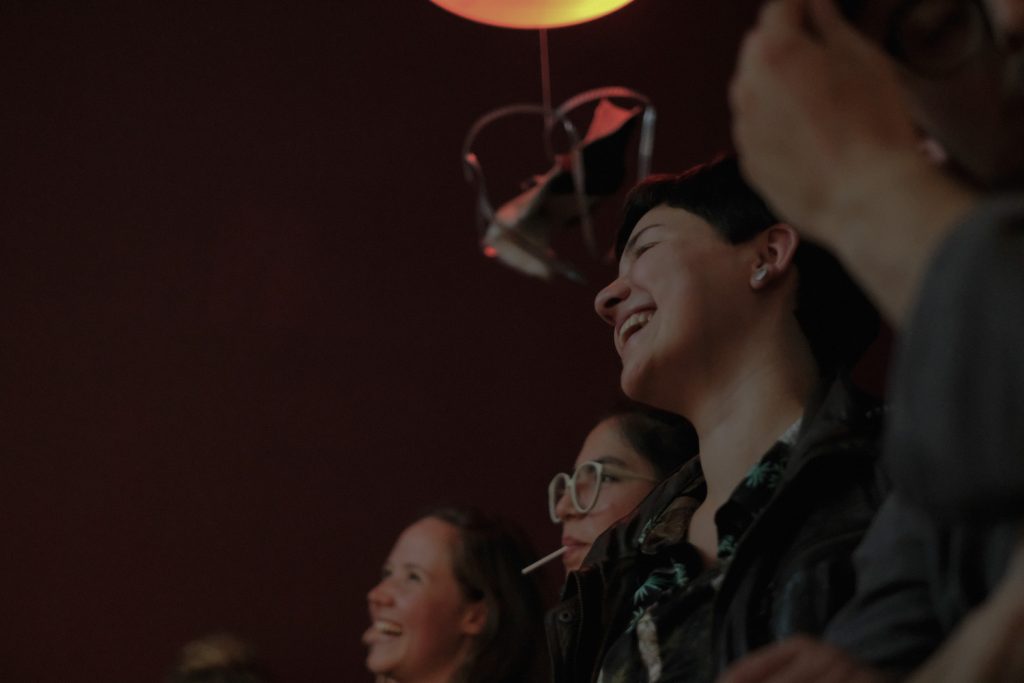
Though the idea for Pankumenta originated in my mind, other people’s work and dedication brought it to life. To create an arts festival, one first needs an idea, but that is only a start. Everyone can have ideas. What is hard is to make the idea real. Money is the next step, and it is only thanks to the financial support from the Center for Civic Engagement at Bard Annandale that this festival has been able to exist and continue. And, lastly but most importantly, you need people who will be both passionate about your ideas and willing to help. You need a team that makes the impossible possible, that sends out emails at late hours after they just finished their class assignments. People who pull off a full two days of program in less than three weeks. You need people who open an exhibition space for you because they decide to believe in and support your ideas. And you need people who are willing to ship you their art from Armenia, France or Brazil, trusting you will take good care of it. So really the credit is neither mine nor Danny’s. The credit for Pankumenta belongs to every single student, artist, performer, waiter, presentor, musician, and audience member — everyone who brought this festival to life.

